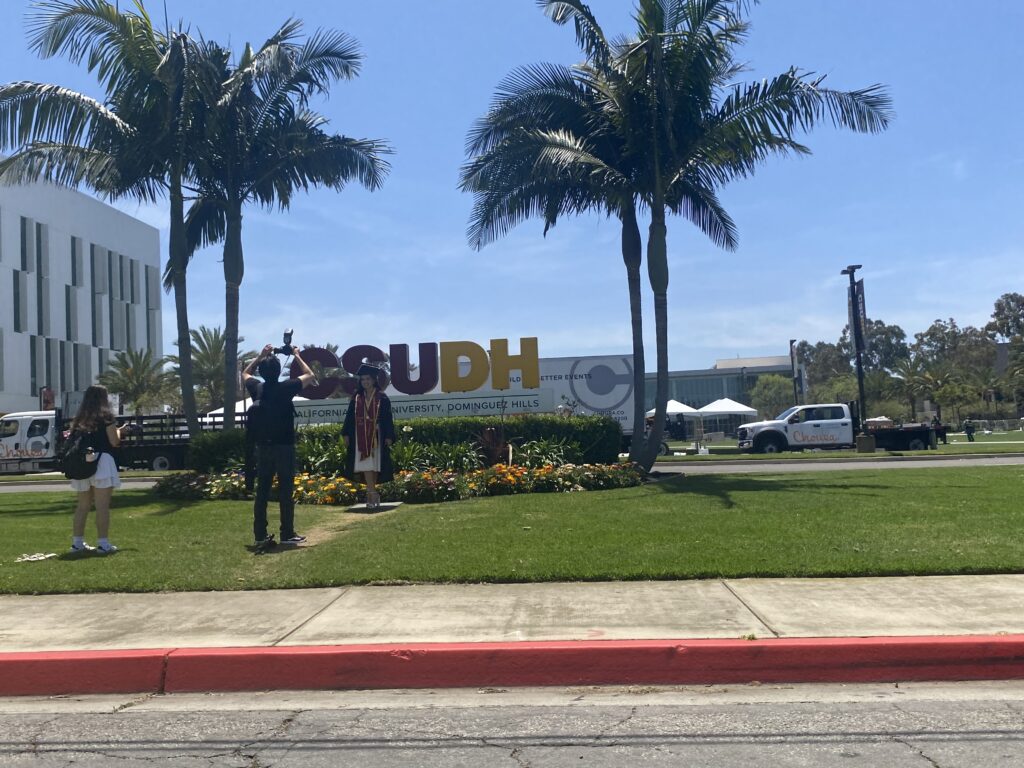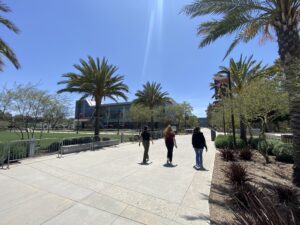Maison Law represents injured victims at California Universities. Going to college is meant to be one of the most exciting times in your life, but injuries can happen. If a campus fails to create a safe environment for you while you’re attending college, the university can be held liable for damages such as medical bills, missed time at school, and mental trauma.
If you or a loved one has suffered an injury at a California university, Maison Law can help you recover compensation by holding liable parties responsible for the full extent of your damages. Contact us today for a free, confidential consultation.
Damages Available for California University Personal Injury
Whether it was a slip-and-fall, vehicle accident, or hazardous condition, an injury on a college campus in California can be life-altering. Unfortunately, most injured victims don’t initially realize that serious injuries will impact their health and financial security for many years to come. 
But that’s where Maison Law can help. We offer legal support to injured college students seeking to get their lives back on track after an injury at a California University. We start by connecting you to immediate medical resources, protecting you from liability if you’re blamed for your injury, and recovering compensation for the following damages:
- Past, current, and future medical bills
- Rehabilitation, therapy, in-home care, nursing care, medical devices, and medication
- Lost wages and employment benefits (if applicable)
- Permanent disability
- Reduced or lost earning capacity
- Out-of-pocket expenses
- Costs to repair or replace damaged property
- Pain and suffering
- Negative impact on mental health
- Post-traumatic stress disorder
- Loss of enjoyment of life
Do I Need a Lawyer for California University Injuries
If you’ve sustained injuries from an accident, it is advisable to seek legal counsel from a reputable Personal Injury Lawyer at Maison Law. Even if you believe the insurance company of the university will cover your damages, speaking with a personal injury lawyer will help you understand all of your legal options before you decide to settle.
If you decide to take legal action through Maison Law, we will:
- Identify All Liable Parties: Accidents on college campuses could easily involve multiple “at-fault” parties. Our attorneys will collect all responsible parties and file a personal injury lawsuit against them, maximizing your chance at full financial recovery.
- Follow Proper Legal Procedures: Our experienced attorneys understand the complexities of suing liable parties and the specific legal rules that must be followed. Having your lawsuit properly filed and the details of your situation perfectly outlined for the insurance adjuster will let the defense know you are aware of your rights and are prepared to exercise them.
- Prepare for Litigation: The attorneys at Maison Law will expedite the litigation process if no acceptable offer is made. We will prepare you for trial, handle all legal proceedings, and represent you in court.
- Allow you to focus on Recovery: Partnering with Maison Law will allow you to recover while we deal with the legal side of your case for you. Not only will this give you a better chance at compensation, but it will alleviate your stress and give you peace of mind while dealing with a very traumatic time in your life.
Premises Liability at California Universities
If an individual, company, or government entity fails to exercise reasonable care over their property and someone gets injured, they can be held liable for damages according to California’s Civil Code 1714(a), which states:
“Everyone is responsible, not only for the result of his or her willful acts but also for an injury occasioned to another by his or her want of ordinary care or skill in the management of his or her property or person, except so far as the latter has, willfully or by want of ordinary car, brought the injury upon himself or herself.”
In a university setting, a premise liability is the most common reason students are injured while on school property. In the next section we’ll cover examples of how these incidents occur. Any proof that a premises liability violation caused your injury will help you have a strong case if you decide to take legal action.
Example of College Campus Premises Liability
In the event you’re injured on a California university campus, the university could face liability for causing your injuries. Situations where the university could be found liable for your injuries include: 
- Poor maintenance: this could mean worn-down stairs or walkways are easily collapsible, or the flat surfaces have deteriorated, forming hazards where people typically walk.
- Inadequate lighting: if areas of the campus are open at night and poor lighting causes a student to get injured, then the University could be held liable.
- Defective equipment: if the school offers gym equipment, bike rentals, or safety gear and their deficiencies result in an injury, then the university could be held liable.
- Not posting visible warning signs: warning signs alerting students to hazards must be properly lit and visible to everyone on campus.
Car and Pedestrian Accidents on California College Campuses
Colleges and universities across California are filled with pathways and pedestrian bridges for students to walk to class. Campuses are required to post proper signage for vehicles and pedestrians alike to prevent accidents, however, incidents still occur. According to the National Highway of Traffic Safety Administration (NHTSA), almost 7,400 pedestrians were killed and over 60,000 were severely injured by a vehicle at an intersection.
With pedestrians being at such a high risk for injury or even death on the roadways, California has implemented laws that not only apply to ordinary highways but roadways on college campuses as well.
California Health & Safety Code 16500 Safe School Buildings
California Health and Safety Code 16500 covers the required safety standards for constructing school buildings in California. The statute says California architects shall adopt guidelines applicable to substandard conditions of school buildings. The guidelines by which the school is built must consider the school’s unique design, use, safety needs, and construction.
If your injury on a college campus was caused by a hazardous condition in a building due to poor construction, you have the right to hold the university responsible for damages. This can be difficult to prove on your own. But at Maison Law, we work with expert investigators and accident reconstruction professionals to prove your case, no matter how difficult it may seem. Contact the Personal Injury Attorneys at Maison Law today to see what legal options are available for your situation.
Does University Structural Law Cover Earthquakes on College Campuses in California?
Yes, earthquakes must be accounted for when designing any educational facility in California. If a building is not structurally sound enough to handle an earthquake and people are injured as a result, then building designers can be held liable for damages. California Health and Safety Code 16600 (a) states:
“The State Architect and the State Building Standards Commission, in consultation with, and with the concurrence of, the University of California, the California State University, the Structural Engineers Association of California, and the Seismic Safety Commission, shall develop and adopt building seismic retrofit guidelines for state buildings, including those owned by the University of California and by the California State University, by January 1, 1993.”
Seismic retrofitting is the process of strengthening a building or home to withstand damage from earthquakes. The statute goes on to say that seismic retrofit guidelines include provisions for the removal of falling hazards that are structural or non-structural components of the building as they can cause life-threatening damage to those within the building during an earthquake.
School Building Classification in California
According to California Health and Safety Code 16500, “school buildings” must adhere to specific guidelines to keep everyone in the school safe, even during seismic activity.  But with so many different types of buildings being used as schools, you may wonder what classifies as a school. Section 17283 of the Education Code states:
But with so many different types of buildings being used as schools, you may wonder what classifies as a school. Section 17283 of the Education Code states:
“School building includes any building used, or designed to be used, for elementary or secondary school purposes and constructed, reconstructed, altered, or added to, by the state or by any city or city and county, or by any political subdivision, or by any school district of any kind within the state, or by any regional occupational center or program created by or authorized to act by an agreement under joint exercise of power, or by the United States government, or any agency thereof.”
So, no matter what type of building you’re in, if it is being used as a school, then school building law, such as Section 17283, applies if someone is injured due to unsafe structural designs of the building.
Common University Construction Defects in California
When a construction defect in a school ends up injuring a person, multiple parties from architects, to builders, to suppliers, to inspectors, to subcontractors can be held responsible for damages. It is not uncommon for structural accidents to be the result of multiple acts of carelessness. Establishing the cause of the structural accident is imperative to a successful lawsuit. The most common construction defects at universities include:
- Construction deficiencies: these happen when the structure does not perform as expected and the integrity of the building is compromised. These factors include:
- Mechanical elements
- Plumbing
- Electrical systems
- Expansive soil
- Door and window installation
- Design deficiencies: these claims arise from the design of the building failing to hold up against normal building operations. These designs include:
- Poor roof design
- Uneven foundation
- Doors and windows failing to operate properly
- Material defects: materials chosen by the designer or built by the manufacturer could be defective in maintaining the structural integrity of the building such as:
- Waterproofing membranes
- Insulation
- Drywall
- Subsurface defects: subsurface applies to the safety and continued use of the building. These defects become apparent if the building cannot withstand too much rain, sun, or seismic activity. A leading cause of these deficiencies is improper compacting of soil or inadequate drainage, which causes premature failure of the building’s foundation.
Average Settlement for Pedestrian Accidents Based on Injury
The severity of your injuries will account for a majority of your overall compensation if you reach a successful settlement. At Maison Law, we establish communication with all your medical providers to calculate the medical attention you’ll need now and for the rest of your life. While there are other determining factors, the following pedestrian accident injury classifications can give you a rough estimate of what your case is worth.
- Minor injuries: Approximately $1,500 – $15,000 – minor injuries are considered sprains, strains, and minor cuts and bruises.
- Moderate injuries: Approximately: $15,000 – $100,000 – moderate injuries are considered fractures, herniated discs, and torn ligaments.
- Severe injuries: Approximately $100,000 – $1,000,000+ – paralysis and death can quickly exceed settlement amounts of around $1,000,000 or more.
Contact a California University Injury Lawyer
If you or a loved one has been injured due to a careless act, hazardous condition, irresponsible driver, or structural hazards at a California University, the Personal Injury Attorneys at Maison Law can help you get the compensation you need. Government agencies or private education institutions can be held responsible for careless building design. Our firm has years of experience protecting injured students’ rights across California, and we’re prepared to do the same for you.
Contact Maison Law today for a free consultation and case evaluation. There are no upfront fees for receiving our legal counsel, and you don’t pay a cent until your case is won.
Additional Resources:
